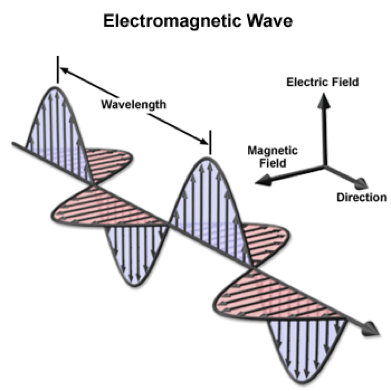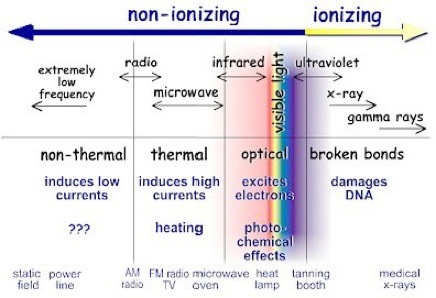the electromagnetic spectrum










Electromagnetic waves are composed of an oscillating electric field perpendicular to an oscillating magnetic field. The two fields cause the transverse wave to propagate forward, perpendicular to both waves. In a vacuum, electromagnetic waves propagate at a speed of 300,000,000 meters per second.
The electromagnetic spectrum categorizes the known types of electromagnetic waves according to wavelength and frequency. Long wavelength and low frequency waves are at one end of the spectrum, such as radio waves and microwaves. Infrared waves (heat) and visible light are in the center of the spectrum. Higher energy electromagnetic waves, with short wavelengths and high frequencies, include ultraviolet light, x-rays, and gamma rays.
electromagnetic waves



Electromagnetic waves, also called electromagnetic radiation, transfer energy when they collide with an object. Higher energy electromagnetic waves, such as gamma rays, ultraviolet rays and x-rays, carry so much energy that they can knock an electron off of an atom resulting in changes in the molecular structure of a substance. This creates a charged ion from a neutral atom. When cells from living organisms are ionized, mutations or cell death may occur.
Ionizing radiation
